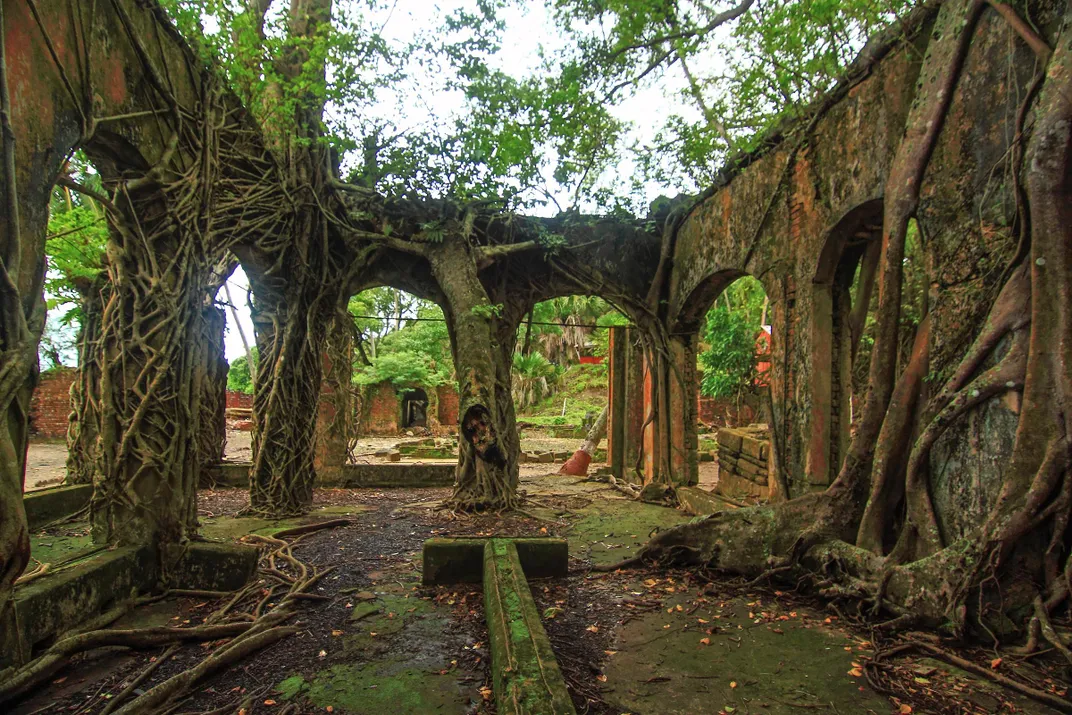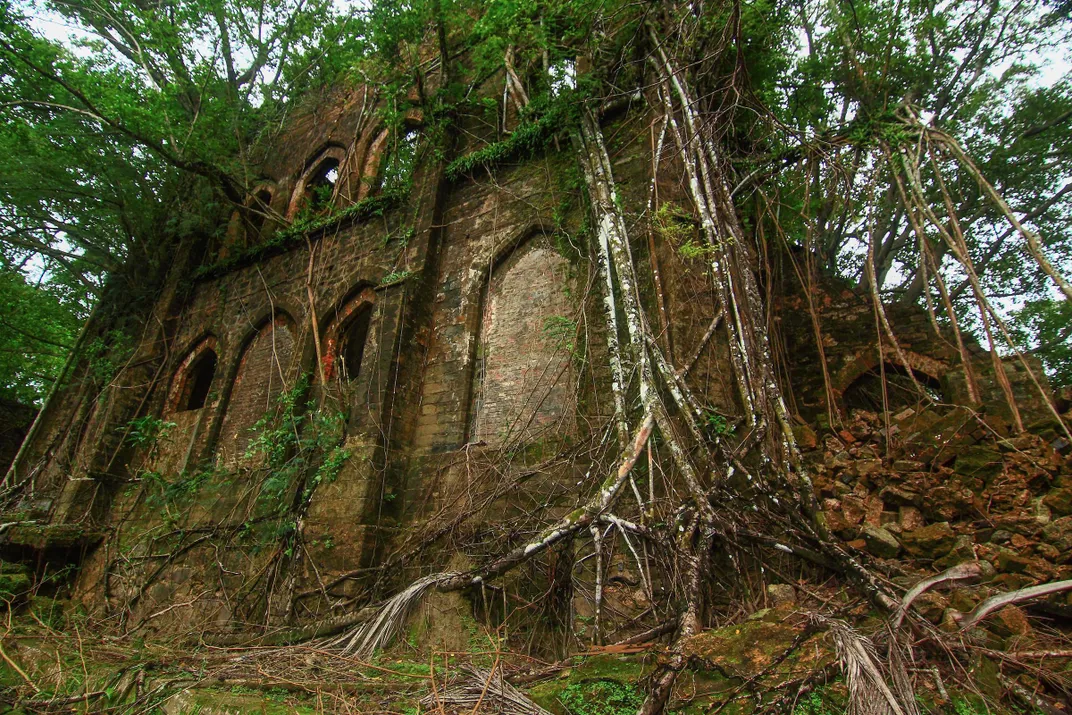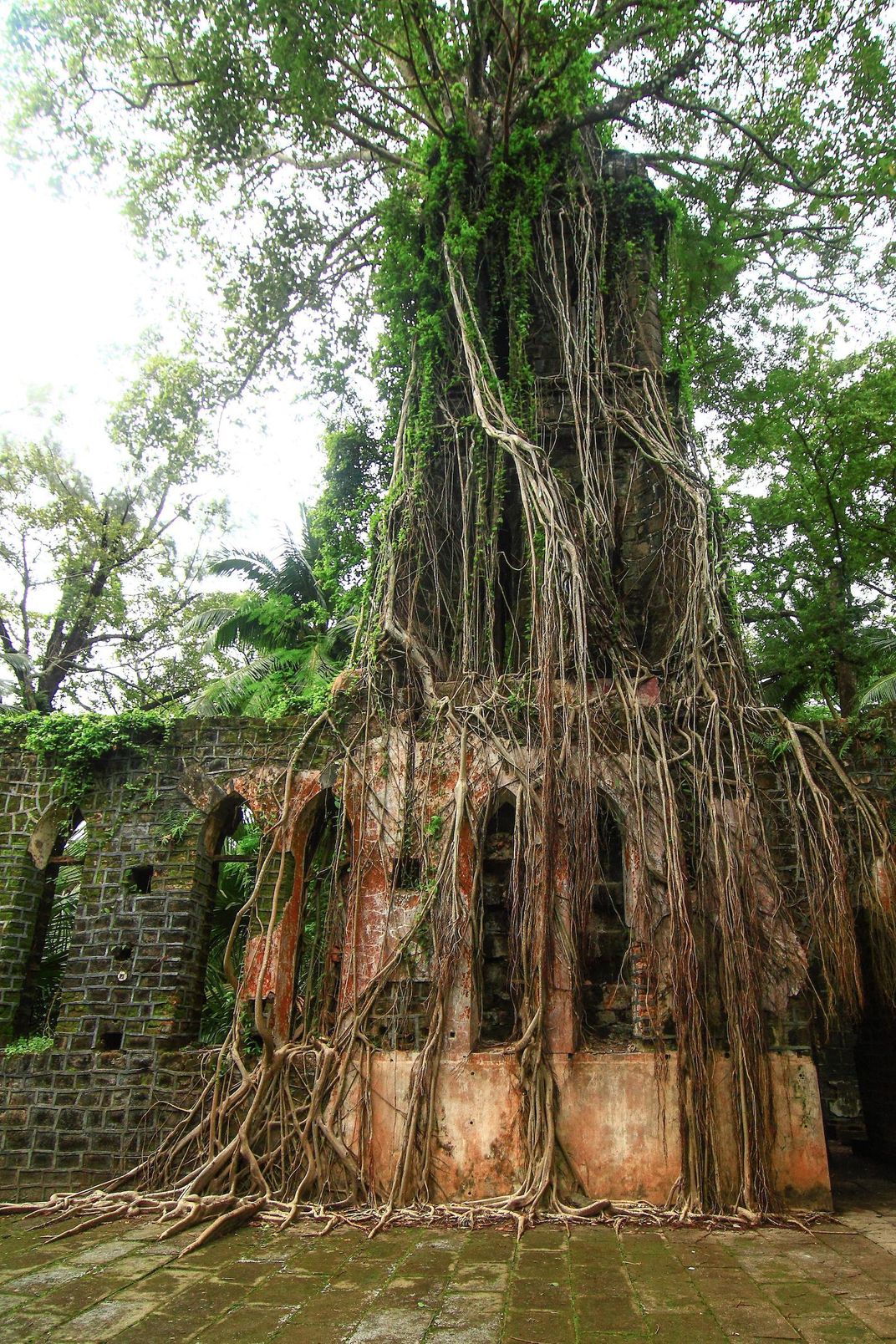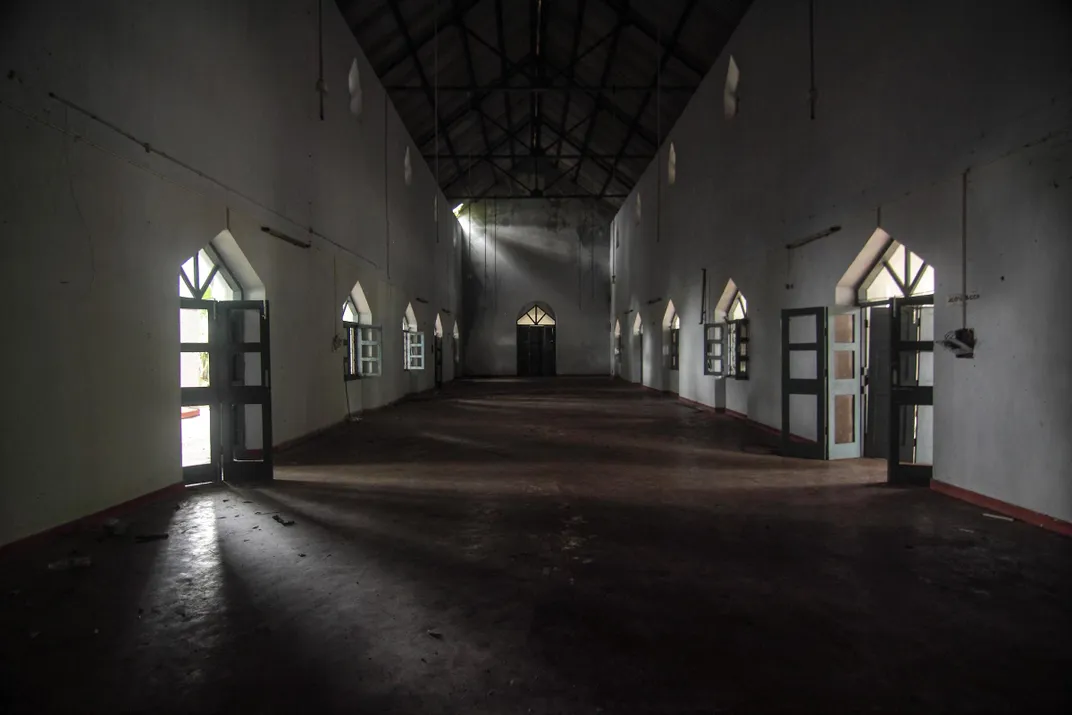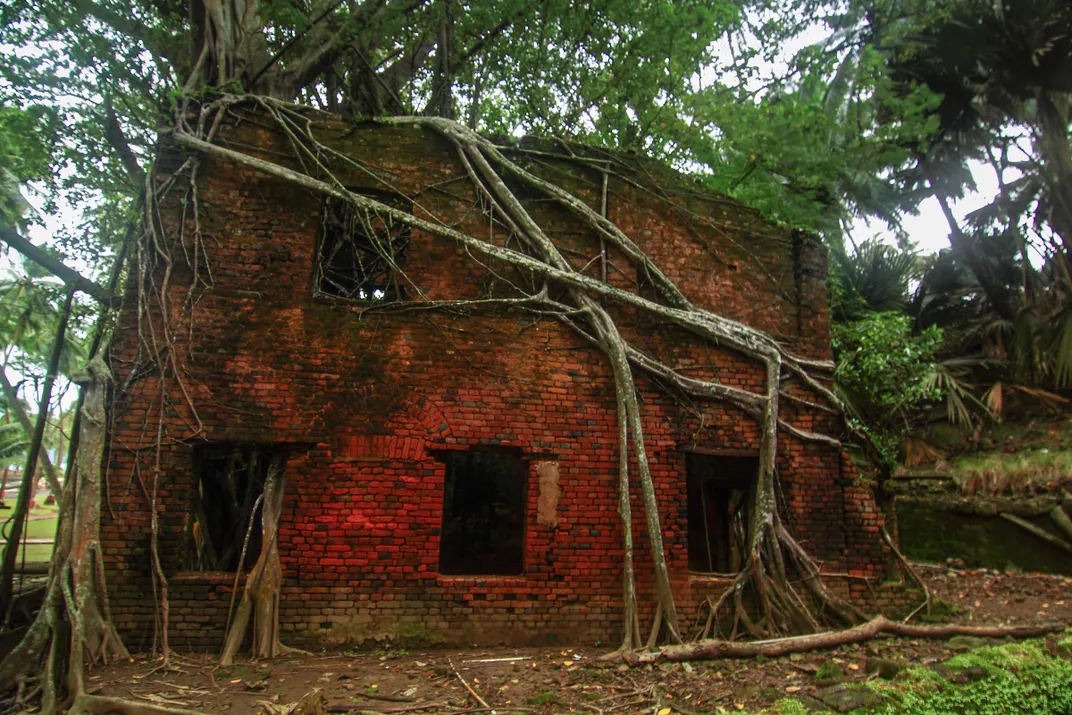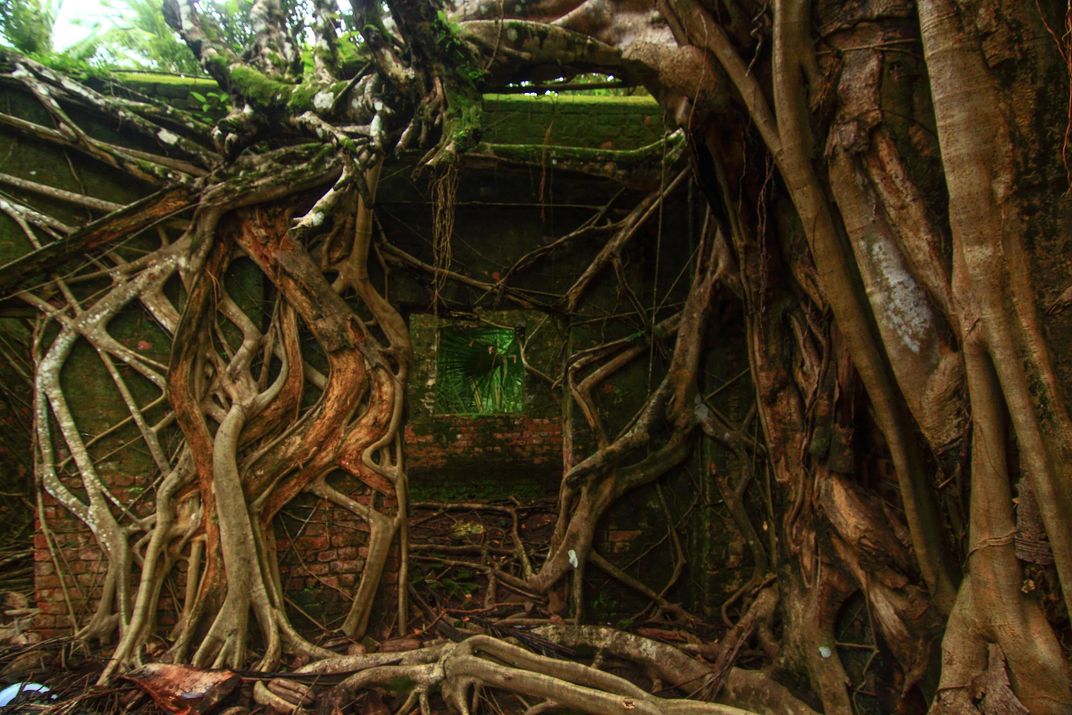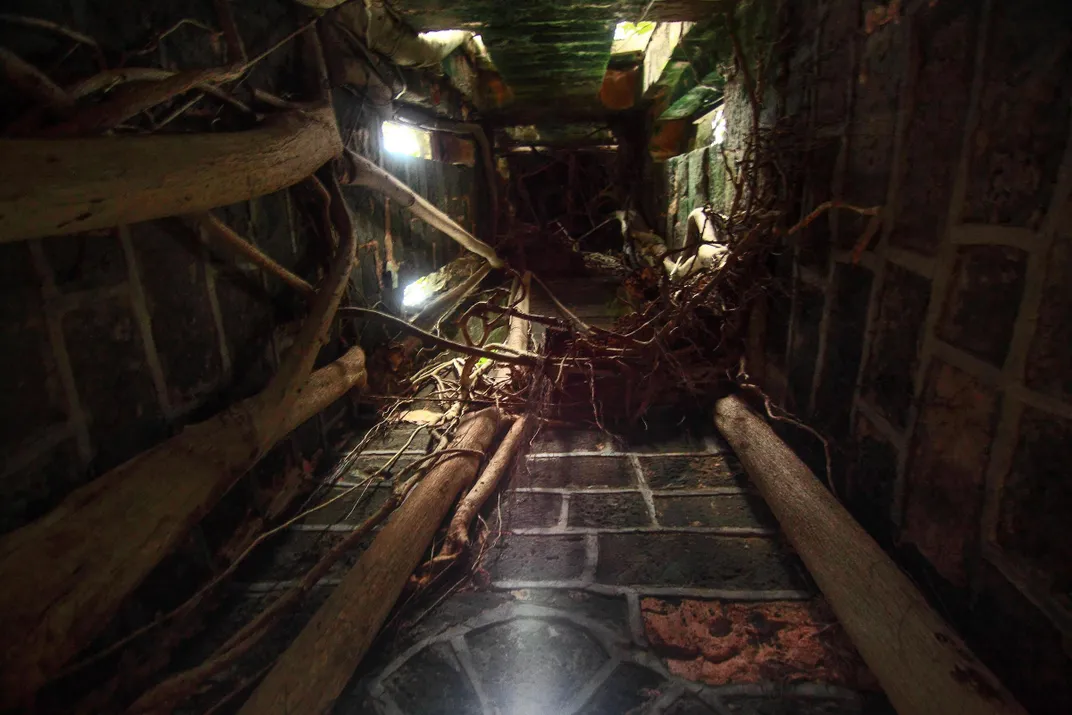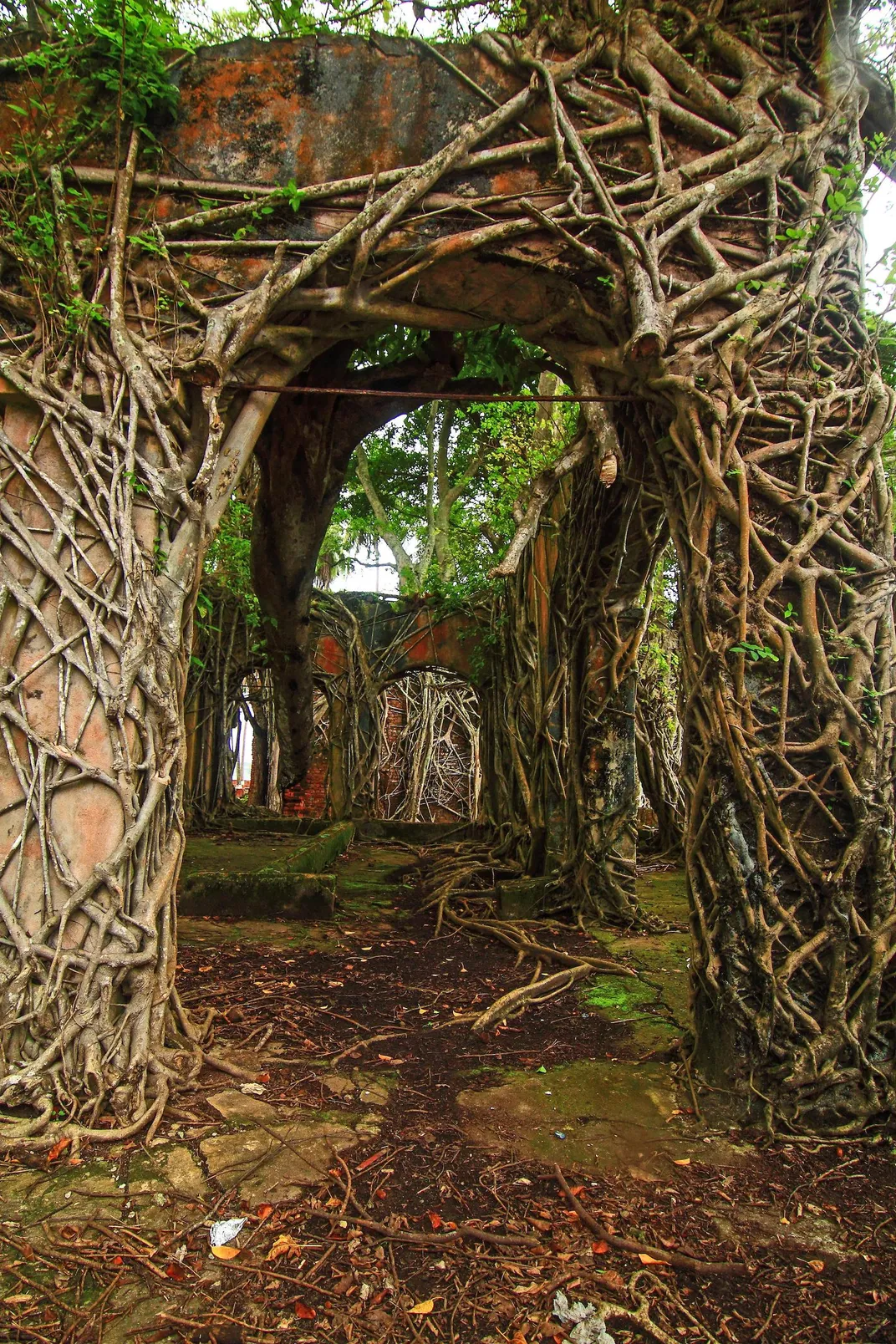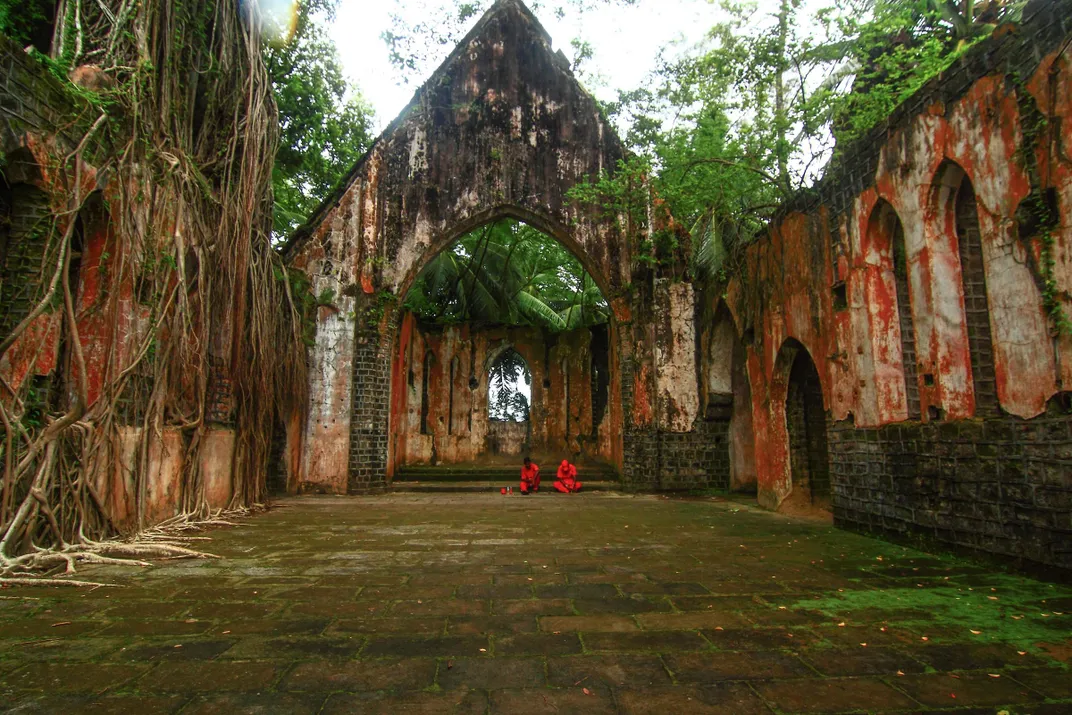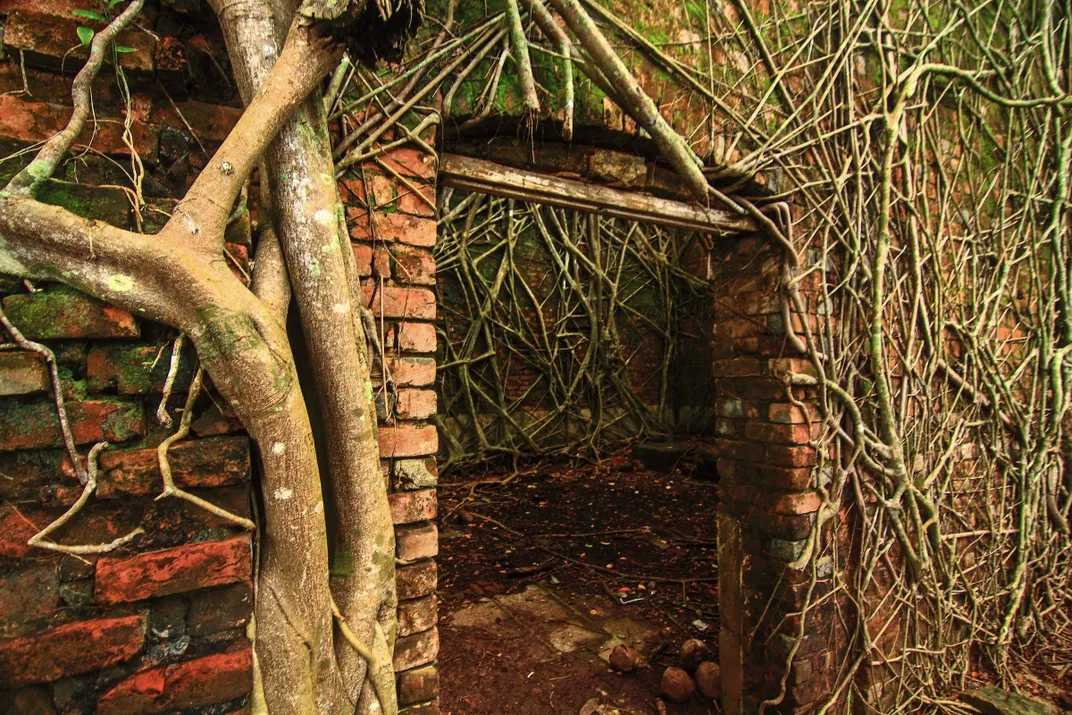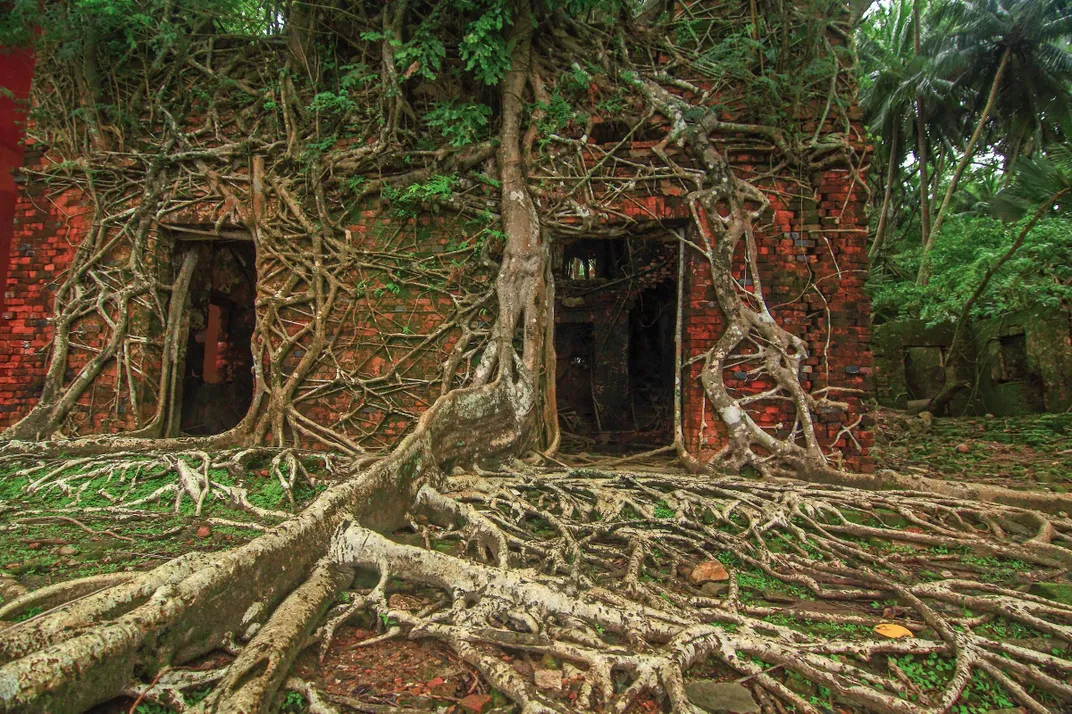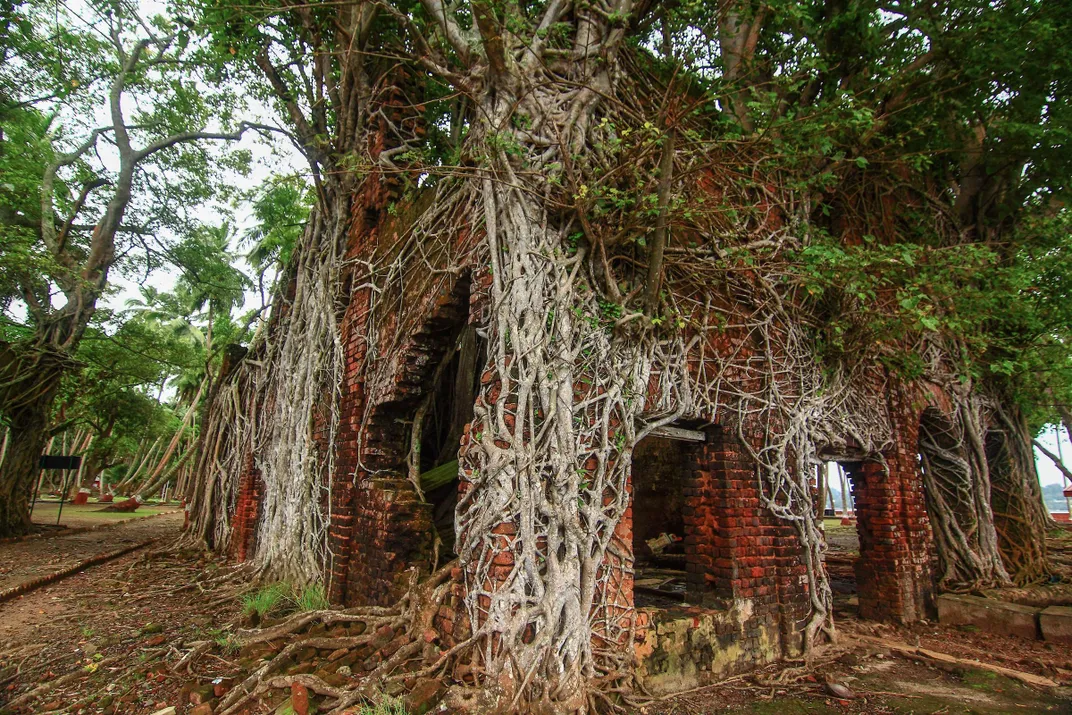India’s Abandoned Island of Colonial Horror
Eerie and desolate, Ross Island harbors a tale of oppression and disaster
For decades, an obscure speck of an island—measuring less than one-third of one square mile—was the site of the brutalization of thousands of convicts and political prisoners amidst a luxurious British colonial settlement. Today, the jungle has reclaimed the land of Ross Island, shrouding in foliage its gruesome past. Giant knots of Ficus tree roots ensconce the dilapidated remains of opulent bungalows, and have taken over a ballroom where couples once waltzed. Some 800 miles away from the coast of mainland India, the island in the Indian Ocean is now swaddled in eerie desolation and overgrown vegetation.
After the Indian Mutiny (also known as the Sepoy Mutiny or Indian Rebellion) of 1857, considered to be the first war of eventual Indian independence, British colonists who were caught unawares by the rebellion immediately sought to establish a faraway penal settlement to subdue the rebels. As the British contained the revolt, mainland India's provincial jails became overcrowded. “This decided the British in favor of setting up a penal settlement on the Andaman islands to ease the situation,” says Aparna Vaidik, a professor of history at India's Ashoka University.
British doctor James Pattison Walker arrived at the Andaman & Nicobar archipelago in March of 1858 and established the penal colony while in the company of 200 convicts and rebels. Ross Island, the smallest of the 576 islands that form the archipelago, was chosen as the colony's administrative headquarters as its strategic location provided safety from attackers. Thus began an era of unprecedented penal cruelty on Indian soil. The tiny island was an unlikely seat of power, but it ultimately became the center of a penal settlement that expanded across many of the other islands.
For years, the inmates were forced to clear the island's impenetrable, humid forests to make way for an opulent colonial complex. They constructed everything from a luxurious commissioner’s bungalow with carved gables and shaded verandas, to a Presbyterian church fitted with stained glass window panels from Italy. Ross Island's colonial masters could entertain themselves in manicured gardens, tennis courts and swimming pools, and in fact, no expense was spared in making Ross a comfortable haven. “Life on Ross wasn't all hunky dory," though, notes Vaidik. Residents felt isolated and bored, and "the posting was seen as a punishment by most officials."
But Ross Island's colonial overlords lived in stark contrast to the inmates they oversaw. Malaria, cholera, dysentery and other diseases were an ever-present threat in these tropical islands. The British even conducted illicit medical trials to treat malaria with an experimental drug. Thousands of convicts were force-fed cinchona alkaloid, an unprocessed drug that would later be distilled into quinine, imparting severe side effects that include nausea and depression. (Interestingly, quinine is still used to treat malaria today.) .
Over the years, convicts were sent to the island in hordes. Packed close in makeshift barracks with leaking roofs, inmates were overworked, disease-ridden and emaciated. As the Indian struggle for independence intensified in the early 20th century, the need for a proper prison led to the construction of the notorious Cellular Jail at nearby Port Blair—a tentative Unesco World Heritage site today due to its disreputable role in the brutal suppression of Indian prisoners.
For several decades, this prison oversaw unspeakable atrocities perpetrated against Indian freedom fighters and political prisoners until its eventual closure in 1937. The tragic past of the Andmans, says Vaidik, "can be said to be a dark chapter in the history of British Empire."
The tumultuous history of the islands did not end there, though. In 1941, just a few years after the closure, a magnitude 8.1 earthquake struck the islands, causing more than 3,000 deaths and damaging numerous buildings. One year later, Japanese forces made their way towards Andaman & Nicobar Islands. Unable to defend the islands, the British fled and, over the course of three years of Japanese occupation, Ross Island was pillaged for raw material and vandalized to build bunkers. Allied forces recaptured the islands in 1945 and soon after, the entire penal colony was permanently disbanded. Today it is administrated by the Indian government.
Though the rest of the Andaman & Nicobar Islands were eventually reoccupied in subsequent decades, Ross Island's community dissolved. Today, nature has reclaimed most of the land and the island exists as a tourist attraction, a short ferry trip from Port Blair. Gnarly trees have enveloped buildings in their entirety and ghosts of the past haunt the roofless walls. But concealed just under the veneer of the island's nostalgic allure is the forgotten story of decades of colonial oppression. Ross Island was once touted as Paris of the East; now, it remains an unlikely memorial to the misery of the fallen.
Planning Your Next Trip?
Explore great travel deals
Smithsonian magazine participates in affiliate link advertising programs. If you purchase an item through these links, we receive a commission.
